Are freestanding baths a good idea?
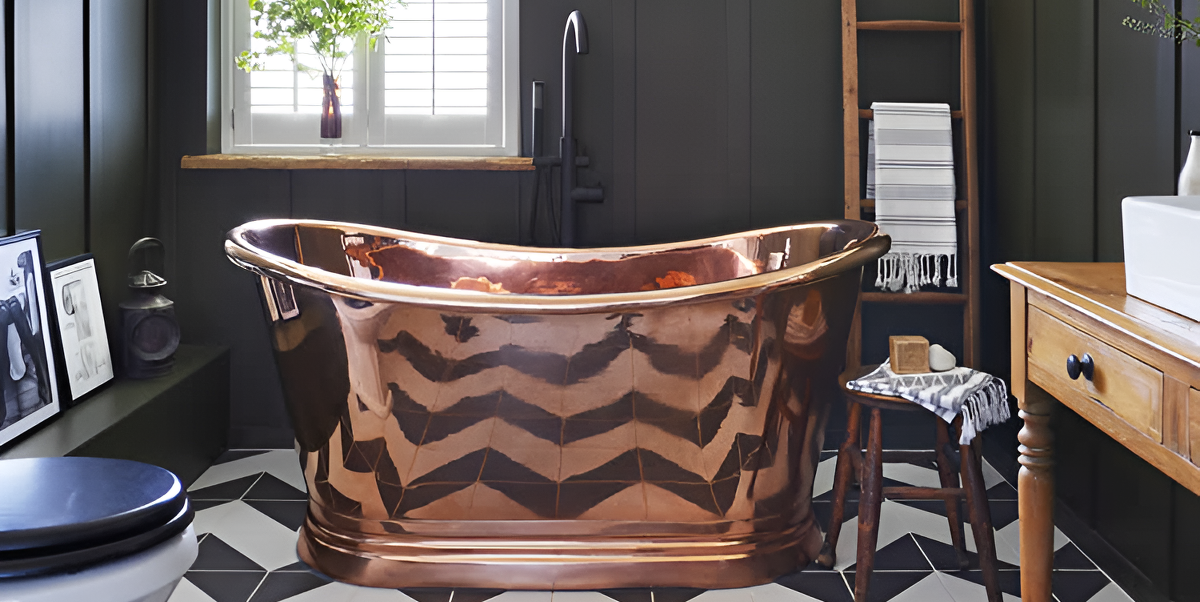
As glamorous as they are, freestanding baths are not a quick, easy-fit solution to upgrading your bathing space – or even as a luxurious addition to a bedroom. There's a lot to keep in mind: shape, material, colour, space, positioning and how your freestanding bath will work with surrounding walls and the floor.
Still, there's no denying its continued popularity. 'Freestanding baths are still the ultimate statement feature in any bathroom,' says Helen Clark, head of marketing at Utopia Bathroom, noting sales have risen by at least 10 per cent in recent years. 'We've seen a consistent increase in sales over the last three years, even taking into account the current economic climate and the impact of Covid.'
The idea of a freestanding bath taps into our renewed focus on wellbeing and our desire for a spa-like bathroom (enter the spathroom), and aligns with one of the biggest bathroom trends, colourful bathroom furniture – these painted baths and coloured ceramics add character, personality and depth to bathroom spaces that are finally being given the same attention as other rooms in the home.
We've asked bathroom experts to share their advice on how to choose the best freestanding bath to suit your home.
What's so great about a freestanding bath?
Barrie Cutchie, design director at BC Designs, says that owning a freestanding bath is all about spending time luxuriating in water for wellbeing, not just a quick scrub. 'But it isn't just about relaxation,' he adds. 'Freestanding baths offer so much when it comes to the design and look of a bathroom. They offer a focal point that instantly creates wow factor and draws your eye in and leaves a lasting impression on your visitors.'
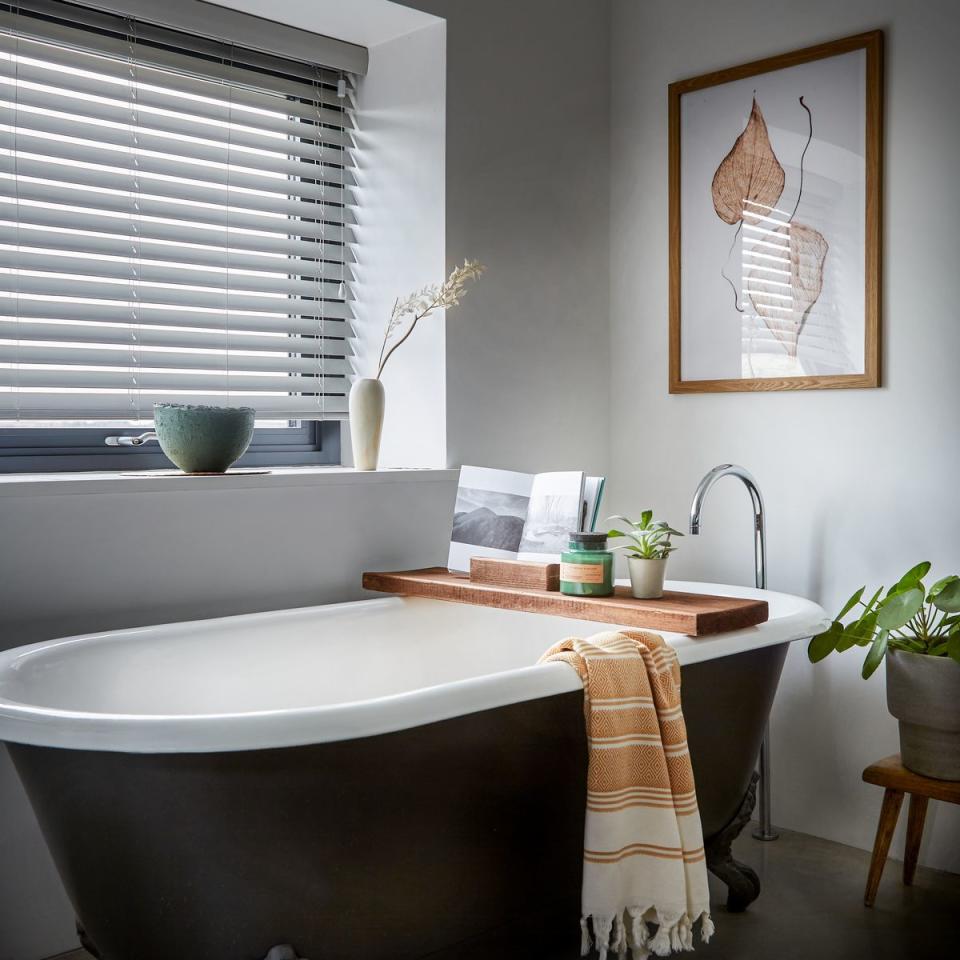
And not so great?
Large freestanding baths make an impressive bathroom feature, but they're not always the most user-friendly choice. Make sure you're able to climb in and out with ease. 'Some are even too tall to lean over the side, making bathing a child or pet difficult,' says James Roberts, director of Sanctuary Bathrooms. 'Consider such practical aspects before making your decision.'
Can you put a freestanding bath in a small bathroom?
You can certainly put a freestanding bath in a small bathroom thanks to lots of compact models now on the market. Look for a length of 1,500mm (a standard bath size is 1,700mm), while the width generally won't deviate from the standard 700mm. Another good solution for a small bathroom is a 'back to wall' freestanding bath, which can be placed against one wall.
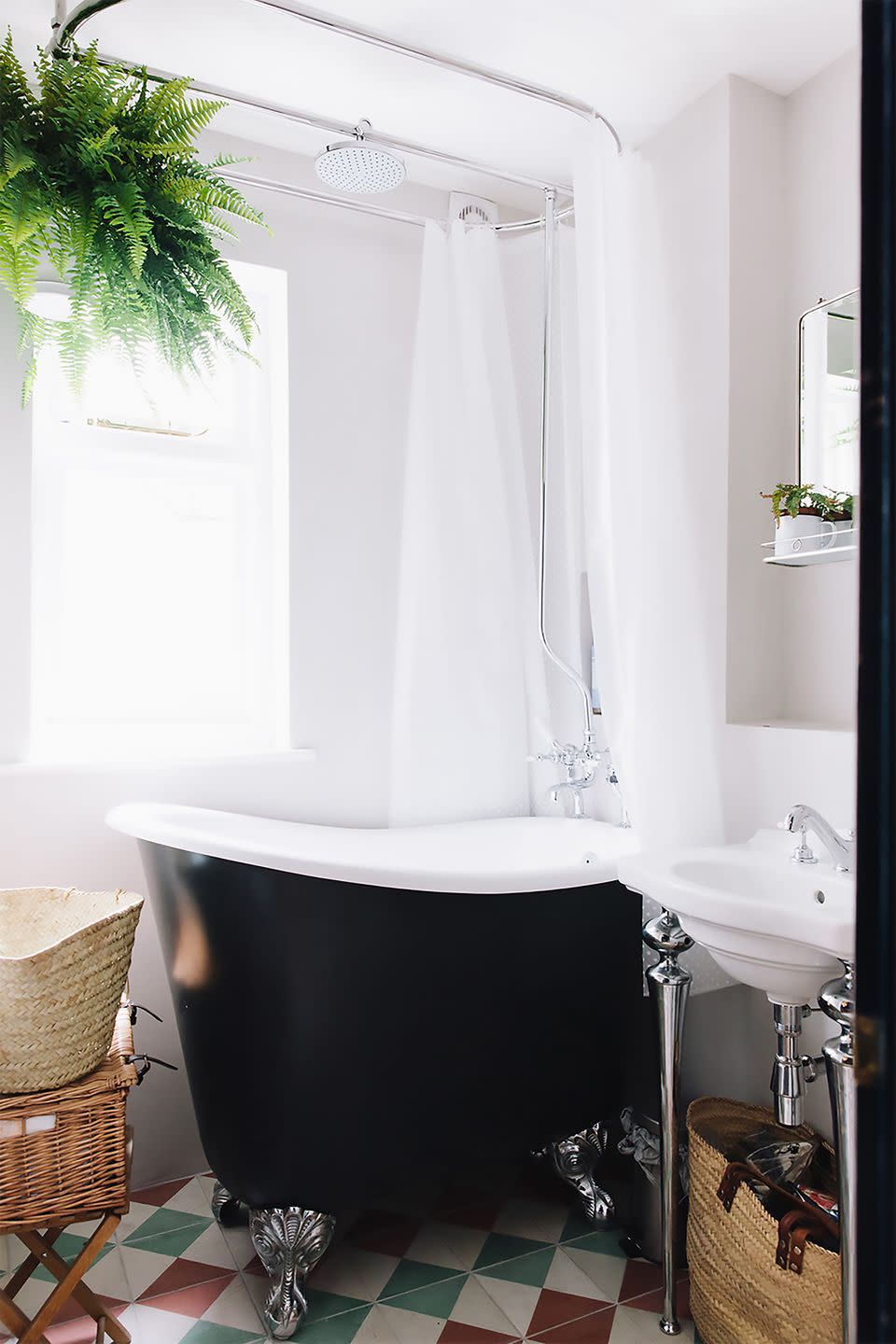
Where to position your freestanding bath
'If you have a great view looking out onto your garden, courtyard or undulating country hills, you would of course ensure the bath is placed so you can look out the window while you enjoy your soak,' says Abbie Schofield, head of design at Ribble Valley Bathrooms. 'In a large bathroom space, you may choose to make your freestanding bath a focal point and place it in the middle of the room, perhaps even elevate it with a step up.'
You should consider all the sight lines in the room, working out at what angles the bath will be seen from all areas.
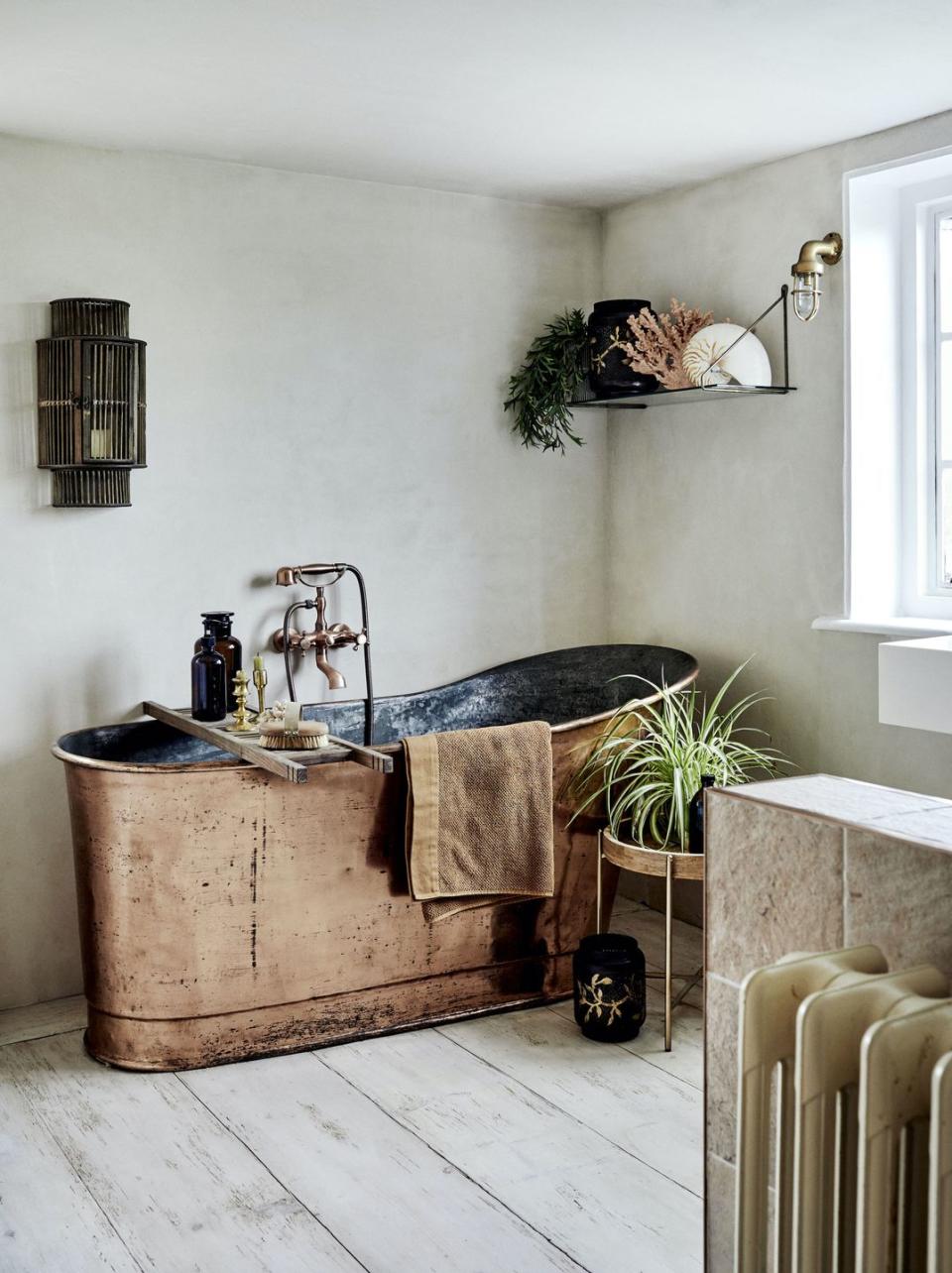
It's also possible to use what Abbie calls 'intelligent screening' in your bathroom to create privacy or separation, so one person can enjoy their soak in peace while another uses the bathroom. She suggests a screen of frosted glass or Crittall-style windows to separate your freestanding bath from the toilet and sink areas.
How much space do you need around a freestanding bath?
The point of a freestanding bath is that it stands alone in the room, so you do need space around it. 'A minimum of two to three feet of clearance on all sides is ideal for a comfortable and visually-appealing layout,' says Abbie.
If you have an alcove, corner or a feature wall, carefully positioning your freestanding bath here can set the space off beautifully. However, do consider the amount of steam a full freestanding bath will produce, so ensure that walls have a water-resistant surface.
However, one of the challenges – for a comfortable and relaxing bathing experience – is to ensure that you have everything to hand. Place a freestanding bath within reach of a wall to house everything you need, including bath oils and candles.
'It is important to consider where to store the towels, soap and other items when the bath is not in use, perhaps a nice piece of freestanding furniture would work,' says Adam Mosley, director of bathroom company Thomas Crapper.
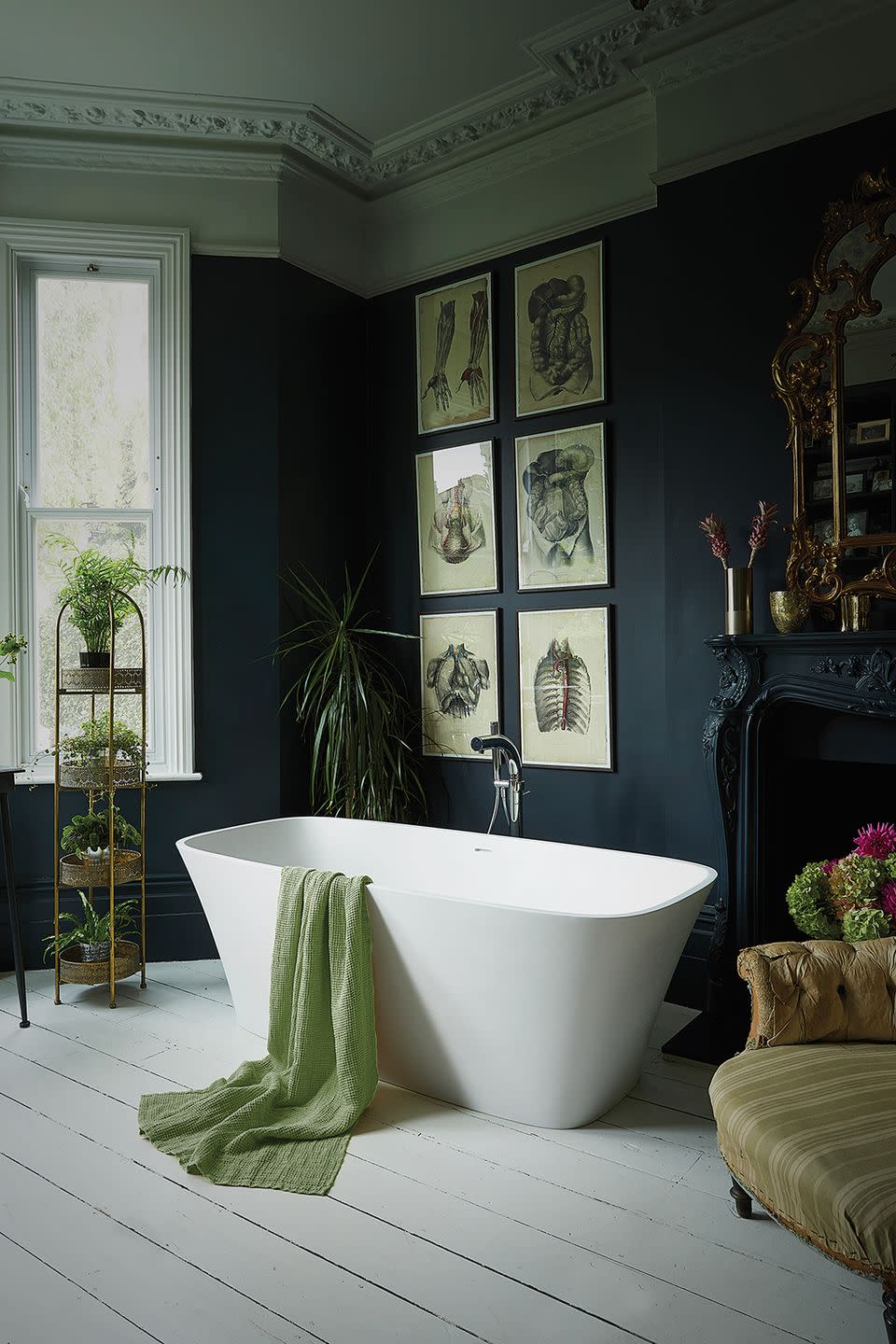
Types of freestanding bath
Abbie outlines the different types of freestanding bath you can choose from.
• Slipper tub – this looks similar to a high-heeled shoe with a raised interior at one end.
• Double-ended – two sloped, rounded ends to rest against.
• Pedestal – resting on a base that matches or complements the bath itself.
• Freestanding corner – triangular in shape with two straight sides to fit awkward corners.
• Freestanding soaking tub – oval, and deep enough to sink your shoulders into.
• Back to wall – great for space-saving as it can be placed directly against a wall.

What materials are freestanding baths made of?
The traditional style of a freestanding bath is made of cast iron with claw feet. There are even marble ones – beyond the budgets of most of us.
A heavy cast iron model might not be practical if you live in a top-floor apartment, for example (mine was extremely difficult to transport upstairs, even though the top floor had been removed during a full-house renovation so it could be hoisted up). Always make sure there's room to bring your freestanding bath into your home through doorways, around corners and up the stairs. One of the most appealing aspects of a cast iron bath is that the outside surface can be painted to match your decor, and switched up when you make a change.
Other popular materials include steel (can also be painted), copper, porcelain, concrete, composite/resin and acrylic.
Steel baths are an excellent option if you're looking for a more contemporary version of iron, says James: 'Steel has a real presence and steel baths often look very solid and elegant, they are long-lasting and can withstand large amounts of impact and even if damage occurs, the entire bath surface can be sanded down and re-enamelled. And they are more environmentally friendly, and can be completely recycled. However, they will be cold to the touch, so temperature retention might not be great.'
Acrylic freestanding baths are the cheapest, because they are easiest to produce, adds James. Some are reinforced with resin, and the material is flexible, leading to a wide range of designs and colours. Drawbacks include being prone to damage, cracking and splitting, and discolouration due to exposure to UV light as well as chemicals found in cleaning products. 'Acrylic is a lightweight material making it easy to install and manoeuvre. It is also good at retaining heat which is ideal for taking a long warm bath,' he adds.
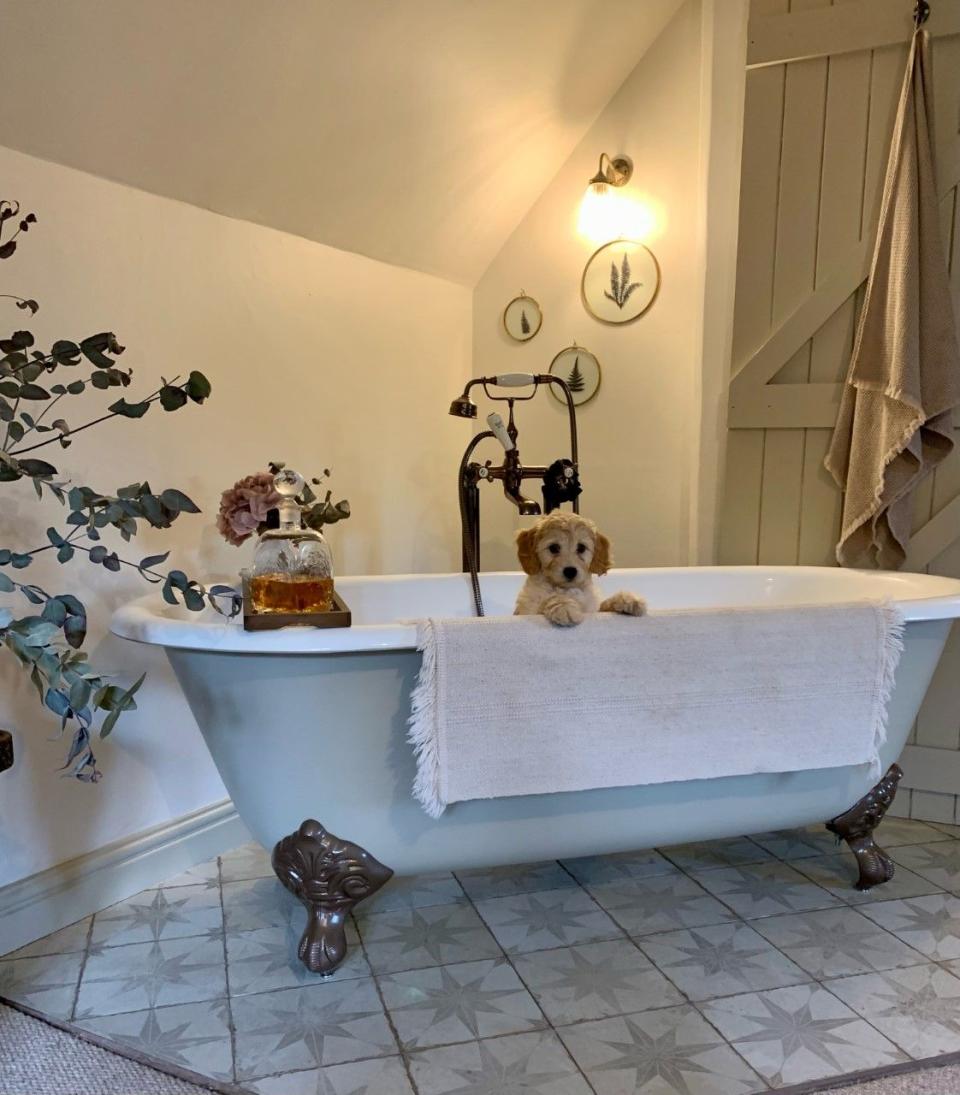
Don't forget the floor
If you're keen on a heavy freestanding bath, made from cast iron, for example, you may need to strengthen the floor with extra joists underneath. Take professional advice from a suitably-qualified builder or structural engineer; it would likely involve removing the ceiling below, so it's disruptive and adds costs.
Freestanding baths, because they are not 'set' into a surround, tend to splash water over the sides more than standard models, so always ensure that the flooring beneath is sound and waterproofed to avoid leaks.
'For freestanding baths without feet it is essential to apply a waterproof sealant under the bath,' says Peter Clayton, managing director at Trade Plumbing. 'As the bath is placed directly onto the floor, this step is essential in creating a waterproof coating to ensure no water damage occurs. Make sure to wait at least a day before filling your bath to ensure the sealant is set.'
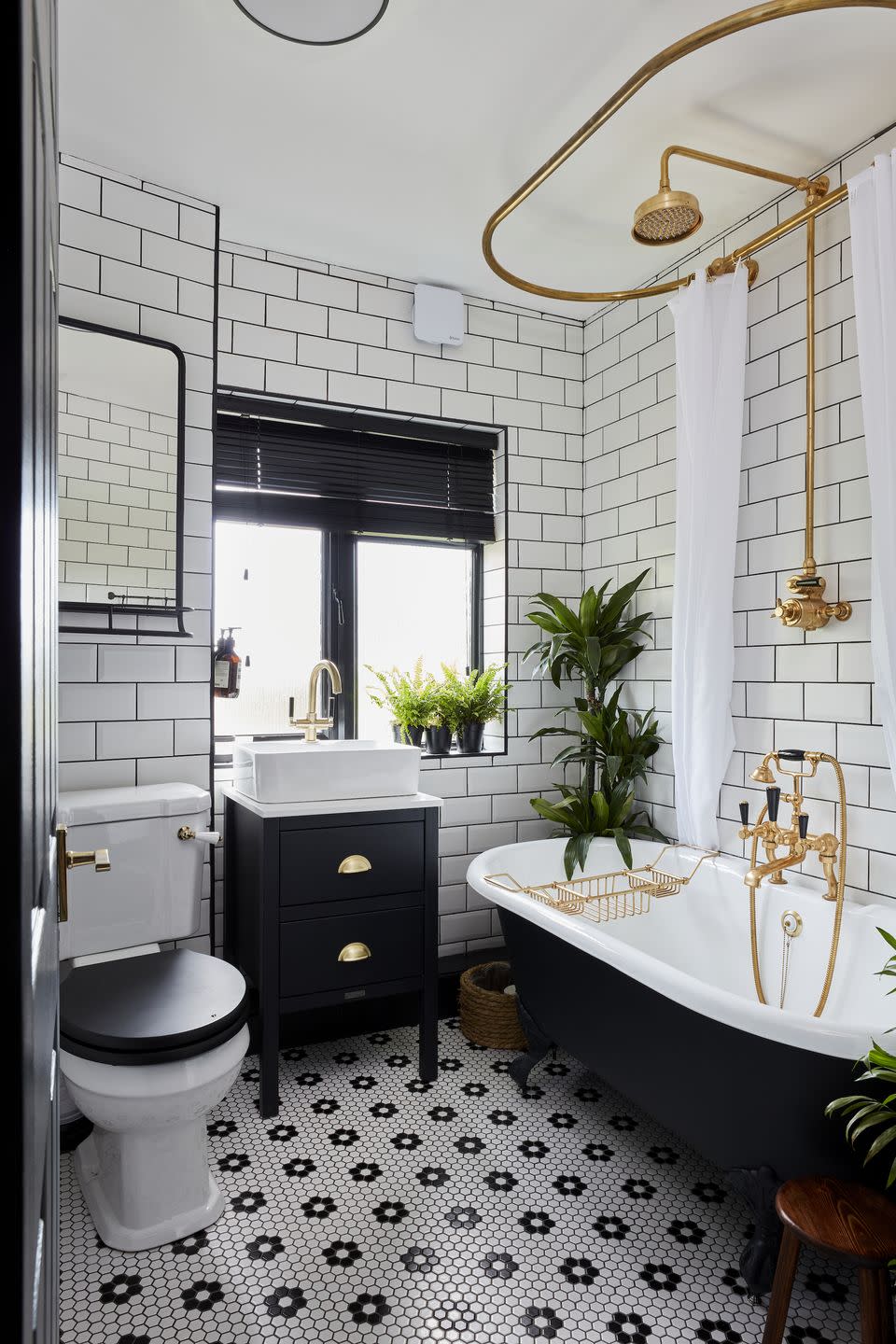
Tips for plumbing a freestanding bath
If you want to save money on installation, try to position your freestanding bath close to existing connections, to cut down the cost of extra pipework.
The trickiest part is the waste, say the experts, so give this extra thought. 'Freestanding baths with claw feet will have the waste plumbing visible underneath the bath and this should be considered when planning where the waste pipe will go,' says Tom Weaver, bath expert at Renaissance at Home. 'With baths that have a plinth rather than feet there is usually room for the p-trap (the bend that stops foul-smelling toxic gases entering from the sewer) to fit between the floor and the bottom of the bath, but that is not always the case and some baths will require the plumbing to be fitted under the floor.'
Peter says that your plumber should always use a flexible plastic waste pipe: 'This allows for extra flexibility during the installation process as well as allowing homeowners to place the bath on its side if any problems ever occur or the bath needs moving.'
Remember, big bath tubs demand a lot of water – so if you're on a water meter and regularly take baths, bear this in mind. And potentially, they take a long time to fill, warns Joss Thomas, founder and managing director of bathroom company Indigenous. 'Make sure that you choose a tap with a high flow rate, either a low pressure tap for a gravity system or a high pressure tap if you've got a combi boiler or Megaflow (cold water tank and in-built heater) system.' Ask your plumber for advice.
Follow House Beautiful on TikTok and Instagram.
You Might Also Like



